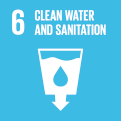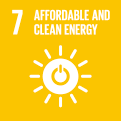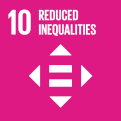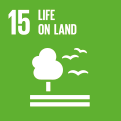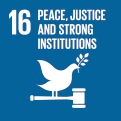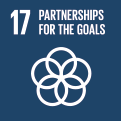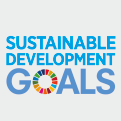
Global level
GOAL 13: Take urgent action to combat climate change and its impacts.
“Climate change is already having a profound and alarming impact worldwide. Global temperatures continued to increase in 2016, setting a new record of about 1.1 degrees Celsius above the pre-industrial period. The extent of global sea ice fell to 4.14 million square kilometres in 2016, the second lowest on record. Atmospheric CO2 levels reached 400 parts per million. Drought conditions predominated across much of the globe, influenced by the El Niño phenomenon. In addition to rising sea levels and global temperatures, extreme weather events are becoming more common and natural habitats such as coral reefs are declining. These changes affect people everywhere, but disproportionately harm the poorest and the most vulnerable. Concerted action is urgently needed to stem climate change and strengthen resilience to pervasive and ever-increasing climate-related hazards.”
Source: United Nations, The Sustainable Development Goals Report 2017
Targets:
-
13.1Strengthen resilience and adaptive capacity to climate-related hazards and natural disasters in all countries.
- Indicator 13.1.1 Number of deaths, missing persons and directly affected persons attributed to disaster per 100,000 population
- Indicator 13.1.2 Number of countries that adopt and implement national disaster risk reduction strategies in line with the Sendai Framework for Disaster Risk Reduction 2015–2030
- Indicator 13.1.3 Proportion of local governments that adopt and implement local disaster risk reduction strategies in line with national disaster risk reduction strategies
-
13.2 Integrate climate change measures into national policies, strategies and planning.
- Indicator 13.2.1 Number of countries with nationally determined contributions, long-term strategies, national adaptation plans and adaptation communications, as reported to the secretariat of the United Nations Framework Convention on Climate Change
- Indicator 13.2.2 Total greenhouse gas emissions per year
-
13.3 Improve education, awareness-raising and human and institutional capacity on climate change mitigation, adaptation, impact reduction and early warning.
- Indicator 13.3.1 Extent to which (i) global citizenship education and (ii) education for sustainable development are mainstreamed in (a) national education policies; (b) curricula; (c) teacher education; and (d) student assessment
-
13.a Implement the commitment undertaken by developed-country parties to the United Nations Framework Convention on Climate Change to a goal of mobilizing jointly $100 billion annually by 2020 from all sources to address the needs of developing countries in the context of meaningful mitigation actions and transparency on implementation and fully operationalize the Green Climate Fund through its capitalization as soon as possible.
- Indicator 13.a.1 Amounts provided and mobilized in United States dollars per year in relation to the continued existing collective mobilization goal of the $100 billion commitment through to 2025
-
13.b Promote mechanisms for raising capacity for effective climate change-related planning and management in least developed countries and small island developing States, including focusing on women, youth and local and marginalized communities.
- Indicator 13.b.1 Number of least developed countries and small island developing States with nationally determined contributions, long-term strategies, national adaptation plans and adaptation communications, as reported to the secretariat of the United Nations Framework Convention on Climate Change
Last updated: 19. 04. 2021






